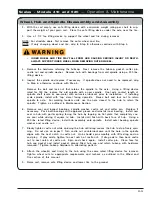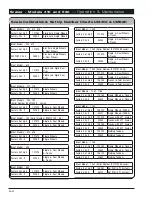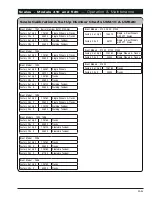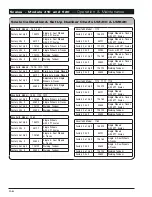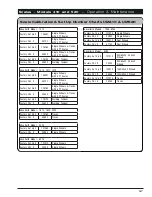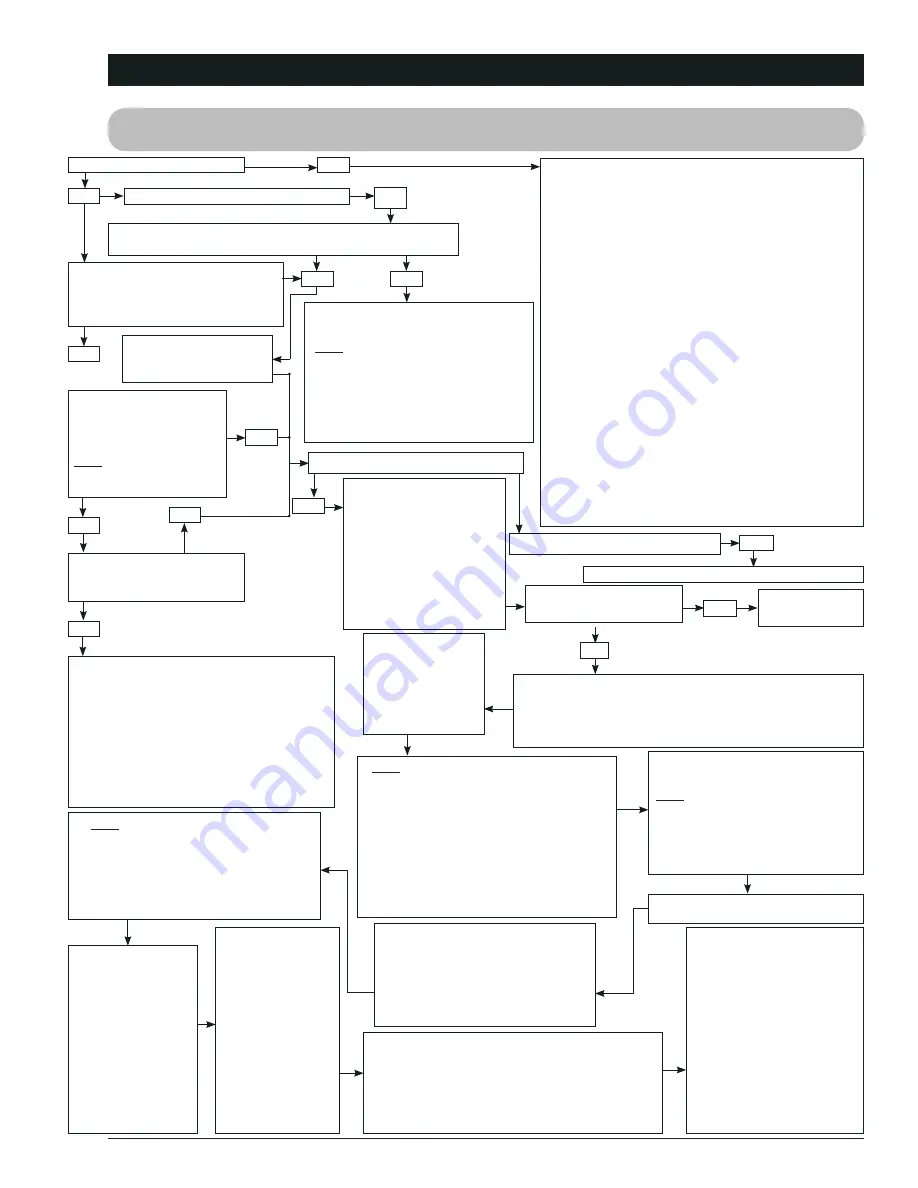
Scales - Models 410 and 520
— Operation & Maintenance
3-17
Does the indicator come on?
No
Yes
Is the reading on the indicator stable?
No
If your display is unstable, or flashes “Range” disconnect the
J-Block cord from the indicator. Is the display still unstable.
Stand on, or hang your weight over,
each load cell. Does the indicator
respond to your weight when you
stand, or hang, on the scale?
No
Check all J-Block and
load cell cables for cuts
or pinched/flat spots.
Your indicator is probably defective.
Try another indicator to verify.
NOTE: Be aware of electrical interfer-
ence that might affect your scale such
as: mobile phones, CB radios, radio
towers, electrical motors, etc. Also
make sure load cell cables are not
attached to hydraulic lines or reservoir
because of static electricity.
Does the scale weigh
you CORRECTLY with your
weight over any of load
cells?
NOTE: Are the readings all
positive? If not, the load
cell is upside down.
No
No
No
Remove the cover from the J-Block.
Does the scale weigh you ap-
proximately the same over all
three load cells?
Yes
Look for loose connections.
If you watch your indica-
tor display while moving
the wires around inside the
J-Block, and by pressing on
the J-Block printed circuit
board, you will see if there
is a loose connection of
bad solder joint.
Have you found a bad con-
nection or a loose wire?
Yes
Dry out your J-Block. (A hair dryer works great.)
Is there moisture inside the J-Block?
Yes
BAD INDICATOR: If you suspect a bad indicator, the
easiest way to check is to try another indicator. Even
if the indicator is a different model or is set-up for a
different scale, it at least should come on.
POOR CONNECTION: Poor connections can be tricky. If
in doubt, don’t just tighten the connection, take them
apart and clean them first. Any connection with rust or
paint should be sanded or wired brushed.
BAD BATTERY: If you suspect the battery, try replacing
it with another one. Don’t be fooled if using a voltme-
ter to test you battery. A weak battery may test good
if checked when there is no load on the battery.
BAD POWER CORD: Make sure the power cord’s red wire
is connected to the plus (+) positive side of the battery,
and the black (-) negative wire is connected to the
negative side of the battery. If using a multi-meter to
check for voltage measure between pin 1 (POS) and pin
2 (NEG). The meter should read between 10.5 and 14.6
volts DC. If using a tractor power cord, the black wire
on the tractor power cord is positive and the white wire
is negative. Voltage from scale indicator should read
between 7.8 and 8 volts.
Fix or replace the
J-Block.
ZERO balance the in-
dicator. (First press
the [FIELD] net/gross
key then the [ZERO]
key.) The indicator
should display “0”.
Disconnect all the load cell wires from the terminal blocks
inside the J-Block. (You can leave the indicator on while
connecting or disconnecting the load cell wires, you will not
damage the load cells or indicator if wires are shorted durn-
ing this step.)
No
Your indicator is probably not set-up and cali-
brated correctly. Check the decal on the bot-
tom of the indicator. The decal shows what
type of load cells the indicator was calibrated
to. By pressing the [ON] key while the indi-
cator is already on, you will get the indicator’s
“SET-UP” and “CAL” numbers. Write these
down and see if they compare to the set-up
and calibration numbers on the indicator.
Contact your dealer for further information.
NOTE: You are going to hook-up the load
cells to the J-Block one at a time (meaning
only one load cell connected at a time). The
purpose of this is to get a reading for each
load cell. Also while performing this test,
you should watch for any other symptoms
such as erratic/unstable display, indicator
flashing “RANGE”, or a negative reading, etc.
If the indicator reading should ever appear
abnormal with any load cell connected, that
load cell is probably bad.
Connect one load cell back into on
of the terminals in the J-Block.
NOTE: The reading you get for each
load cell is dependent on the size
and type of load cell and how much
weight is over each cell. In general,
the number should be a positive and
be stable.
Write down the indicator reading with
the load cell connected.
NOTE: If the scale responded to your
weight, that’s verification that the J-Block is
OK. If the scale did not respond to your
weight, either that load cell is bad or the
J-Block is bad. Try another load cell. If
the scale still shows no response to your
weight, the J-Block is probaly bad.
Stand or hang your weight over the
connected load cell. Write down how
much the weight increased with your
weight over the load cell. (Don’t be
alarmed by the reading, a scale with
only one load cell connected will
weigh heavy.)
Disconnect the
first load cell and
reconnect a second
one. Write down the
indicator reading for
that load cell. Stand
or hang your weight
over the connected
load cell. Write down
how much the weight
increased with your
weight over the load
cell.
Disconnect the
second load cell and
reconnect the third
load cell. Write
down the indication
reading for that load
cell also. Stand or
hang you weight over
the connected load
cell. Write down
how much the weight
increased with your
weight over the load
cell.
Do not expect the load cells to give you the same
reading. It is common for each load cell to have
a reading that is hundreds, maybe even thousands,
different than the others. Especially when one
load cell is carrying more weight than the others.
(Example: the two axial load cells will be carrying
more weight than the hitch bar.)
A bad load cell will have a
reading that is either unstable,
or makes the indication flash
“±RANGE”, or is more than
three times greater, or less
than the average of the oth-
ers. Additionally the readings
of your weight over each load
cell should be similar. (Prob-
ably 2-3 times your actual
weight, but similar to each
other.) Any difference could be
an indication of a bad load
cell or structural problem.
Yes
Yes
Yes
Scale Troubleshooting

